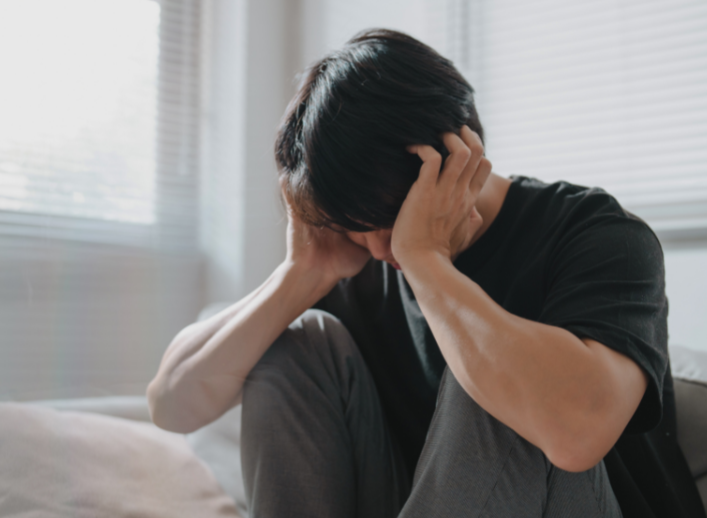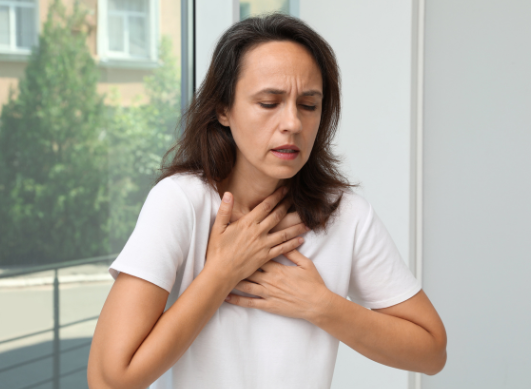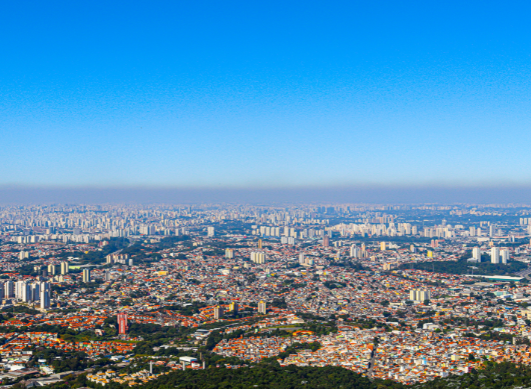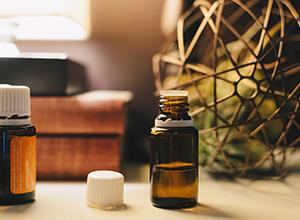- Home
- Forums
- COPD Forum
- Living with COPD
- Quitting Smoking: Tips and Advice
Patients COPD
Quitting Smoking: Tips and Advice
- 228 views
- 5 times supported
- 24 comments
All comments
Go to the last comment

Gordon
Good advisor
![]()
Gordon
Last activity on 12/14/2025 at 8:01 PM
Joined in 2018
75 comments posted | 20 in the COPD Forum
10 of their responses were helpful to members
Rewards
-
Good Advisor
-
Contributor
-
Messenger
-
Committed
-
Explorer
-
Evaluator
@Lee__R
Please share your story:
When I smoked I learned early on that only I had control over what I did or didn’t do, but what I didn’t know was that smoking had control over me. I started very young with my first cigarette at age 10. Most of my peer group at the time smoked. Those young years were spent stealing away with friends somewhere to smoke without being caught by our parents. My father however did smoke. Being self employed, his office was one of the rooms in the house, walls dark blue with the tint of tar from 20 or so years of his smoke. Some of my fondest memories from so early on included the wonderful aroma of his cigarette smoke. The clean, crisp, winding white smoke emanating from his Camel cigarette mesmerized as I watched so early on. Still to this day I love the aroma of a fresh lit cigarette.
By the time I was 16 or so, I was smoking an average of one pack per day. Later on, depending on the job or activities I was involved with, sometimes two packs per day. All through those years and probably until I was around 30, I lived to smoke. I enjoyed each cigarette I smoked, and looked forward to the next. Circumstances would place me somewhere where I could not smoke, but there was always a place nearby to partake. I always tuned out anyone who tried to talk to me about quitting smoking. Former smokers, anti-smokers, whatever or whomever, I figured that I would quit or not quit whenever I wanted to.
During the early 80’s, the push to make the workplace smoke free began. We went from smoking in our offices and conference rooms to being exiled from the buildings to smoke outdoors. As the anti-smoking push became stronger, I decided to enter a company, healthcare benefits sponsored, smoking cessation program. The program consisted of group counseling sessions with other smokers on a few evenings a week. As we progressed through the program, I cut back on the amount of smoking, down to only one or two cigarettes per day at the end of the program. On the last day of that program, we turned in all of our smoking paraphernalia; cigarettes, lighters, ash trays, etc. , and were given medical prescriptions to purchase the nicotine patch.
For me, the patch had no effect. I was not smoking, but missed it, craved it, and ate, ate, ate. Three months later and 25 or so pounds more, I bought a pack of cigarettes and started up again. Knowing all along that I needed to quit, but also needed something else to get me there. Having no idea what that was, the cycle of events began, without me knowing. My wife became sick with a respiratory influenza. Not being a smoker herself, she asked that I not smoke in the house while she was sick. This became step one; I immediately stopped smoking in the house, only smoked outdoors. Step two; soon thereafter we bought new cars and I made the conscious decision to not smoke in the cars. Knowing how the odor remains in the cars and having a new found understanding of what my wife put up with for so many years it was easy, yet sometimes challenging on long drives. Even my daily commute to work in my own car, there was a ban on smoking. I would have a cigarette on the patio with my coffee before leaving, then not another until I arrived at work.
Now enter the late 90’s and early 2000. Bronchitis became an annual, if not semi-annual event. Each time with a little more fervor. Sometimes getting to the stage where it hurt to smoke, but I persevered. Smoked a little less, but continued to smoke none the less. Each time I would end up at the urgent care facility. Would have a chest x-ray, breathing treatment, Motrin for the pain, and a lecture on smoking. Sometimes these trips to urgent care would see me doubled over in pain from the coughing.
Step three; This started in November 2006. During one of my bouts with bronchitis, trying to let it pass, the pain in my chest became stronger and different from what I had experienced so many times before. I was at work, trying to just get through the day, soon it will pass I thought. That evening felt a little better after dinner and went to bed early. Back to work the next day, feeling ill, now with a constant pain in the center of my chest. Was I having a heart attack? I looked inward, tried to self diagnose and see if there were any other symptoms of a heart attack, but nothing. Did I mention that it was becoming more difficult to breathe? There was something different with this bout of bronchitis, so I left work early and went to the Hospital E.R. Upon arrival it was all too familiar, the chest x-ray, breathing treatment, Motrin…But then the E.R. Dr. said that this time, I would be staying there for a week or two. He brought me over to review the x-rays which clearly showed that my right lung had completely collapsed. He explained to me that they need to insert a chest tube immediately to re-inflate my lung and that the pain and pressure that I felt in the center of my chest was the lung pressing against my heart. He went on to say that I should have come in much earlier and that if not treated immediately, the pressure from the lung on my heart could stop my heart from beating.
Ok, that was the initial wake up call. Next was the actual chest tube. Right there in the E.R. the Dr. and Nurse gave me an injection of Lidocaine to numb the skin, made a small incision, inserted the forceps to stretch the opening, then inserted the tube. Imagine taking a blunt object like a rather large diameter ink pen and shoving it into your chest, between the ribs. The Lidocaine only served to numb the skin, the stretching of the opening and inserting the tube was the most intense pain that I had ever experienced in my life. I was kicking and swearing out loud in the E.R. Looking up at the E.R. Nurse to hear her words, “you’re doing just fine” were absolutely no comfort to me. Now the E.R. Dr. stitched the tube securely to my new incision and attached it to the suction device. Next came the sensation of drowning. As the suction began to remove the air from my thorax and allow the lung to re-inflate, I had the sense of being unable to breath, like I was drowning. I gasped for air and again looked to the E.R. Nurse to hear, “you’re doing just fine” once again.
It was at this point that I decided to give in, or give up to the pain and sensation of drowning. Just relax, close my eyes and take whatever came next. My breathing soon eased, I could actually get air. The oxygen mask was pumping away, the chest tube was pumping away, and now Morphine was introduced into my I.V. Within just 5 or 10 minutes I went from the most intense pain, the inability to breathe, to complete relaxation. From the thought of expiring on that table, to just being happy to be alive.
Within minutes, my beautiful wife Linda and lovely niece Monica appeared. After getting me settled into my hospital room they took my car home, searched out all of my cigarettes, lighters and ash trays and disposed of them all. The worst was over, now the healing needed to begin. Eight days in the hospital with massive doses of steroids, antibiotics, and the morphine pump. Sleeping flat on my back with the oxygen mask over my face or in my nose, the I.V. in the left arm, and the chest tube in the right chest. Chest x-rays and/or CT scans daily to monitor the lungs and see what was going on.
Growing up you learn all about the dangers of smoking and lung cancer. You hear about emphysema, but only that it is another smoking related disease. The emphysema that I had, and still have, caused a type of air bubble or pimple to form in my lung. The actual medical term for this pimple is “bleb”. This pimple burst, allowing the air to escape from inside my lung to the outside. This was called a spontaneous pneumothorax, commonly a collapsed lung. Having a hole in the lung is a very bad thing. The entire principle of breathing relies on a balance of air pressure between the outside air and the inside of your chest. Once the lung has been compromised with a hole, all of the air taken in escapes to the exterior of that lung and accumulates in the thorax. The resulting pressure then collapses the lung, thus the need for the chest tube.
So fast forward one week later, the lung has healed, the chest tube was removed, and I am up and out of my hospital room for the first time. A short walk to the outdoor patio of the hospital and guess what my first thought was? It’s been a week and I sure would like a cigarette! But no, with the assistance of the hospital stay, including the morphine, I decided at that moment that I could no longer smoke. I decided that I needed to take back control over my life that smoking had taken from me. The doctors also cautioned me that there were “blebs” in the other lung that may also burst should I continue to smoke. Enough said, the decision was done. I needed to stop smoking now or go through this again, or worse.
Step four: I was back home after eight days in the hospital. The date was November 30, 2006. At home I found that my wife and niece had missed one pack of cigarettes in the center console of my car. This temptation became my final farewell to smoking, and my way of easing out of this control. Each morning with my coffee for the next 20 days, I took one cigarette from that pack and smoked it with my morning coffee, outside of course. This was not to start smoking all over again, but my way of ending it. Ending the control that smoking had over me by taking control over smoking and showing myself that I could do it.
What year were you diagnosed with COPD?
2004
Have you quit smoking?
Yes
What year did you quit smoking?
2004
What recommendations do you have for those that are trying to quit smoking or have considered quitting?
Quitting smoking is a process and it takes conviction to quit. My quitting happened over many years with subtle changes in my lifestyle. I stopped smoking in the house and cars, tried a smoking cessation program 20 years ago which helped me quit for a few months. Not having the odors or reminders in my home or cars helped when I actually did quit. That was after a collapsed lung and 8 days in hospital on steroids and morphine.
See the signature
Gordon Harvey

Nancy2020
Good advisor
![]()
Nancy2020
Last activity on 06/14/2022 at 4:38 AM
Joined in 2021
14 comments posted | 5 in the COPD Forum
1 of their responses was helpful to members
Rewards
-
Good Advisor
-
Contributor
-
Explorer
-
Friend
If I would have known when I started smoking what I know now I would have never started I stoped with the help of Chantex I tried many other things but no success
See the signature
Nancy2020
![]()
pu8909
Good advisor
![]()
pu8909
Last activity on 03/21/2024 at 4:21 PM
Joined in 2018
13 comments posted | 13 in the COPD Forum
1 of their responses was helpful to members
Rewards
-
Good Advisor
-
Contributor
-
Messenger
-
Explorer
@Nancy2020 I think a lot of us feel the same way. I started as a teen when it was "cool" and it took me decades to quit. A few too long I guess, because here I am with COPD.
![]()
cheysel
![]()
cheysel
Last activity on 03/03/2023 at 4:17 PM
Joined in 2023
1 comment posted | 1 in the COPD Forum
1 of their responses was helpful to members
Rewards
-
Explorer
The thread is a bit old but I still want to share my story because it might help someone. I was diagnosed with COPD back in 2015, and I gotta say, it was a huge wake-up call. I had been smoking cigarettes for years and I knew I needed to quit, but it was easier said than done, as you mentioned.
Eventually, I found something that helped me kick the habit: Rove carts. They're these super convenient and discreet vaporizers that use cartridges filled with THC oil. I started using them to help with my COPD symptoms, but I found that they also helped me cut back on my cigarette smoking. Long story short, I eventually quit smoking cigarettes altogether, and it feels amazing.
![]()
Shenita
Good advisor
![]()
Shenita
Last activity on 07/08/2025 at 12:17 AM
Joined in 2020
37 comments posted | 3 in the COPD Forum
3 of their responses were helpful to members
Rewards
-
Good Advisor
-
Contributor
-
Explorer
It's cool you quit smoking. I've been through something similar. I smoked for more than five years, and it was super hard to stop. What worked for me was changing to vaping.
[This content has been moderated by an administrator]
What helped me the most was limiting how many vapes I used each week. I slowly used fewer and fewer. This way, I didn't feel like smoking cigarettes as much. After a while, I stopped smoking them altogether.
![]()
Eazbea
![]()
Eazbea
Last activity on 11/24/2025 at 5:13 AM
Joined in 2024
How did u quit? I'm struggling
Close all
See the responses

Gordon
Good advisor
![]()
Gordon
Last activity on 12/14/2025 at 8:01 PM
Joined in 2018
75 comments posted | 20 in the COPD Forum
10 of their responses were helpful to members
Rewards
-
Good Advisor
-
Contributor
-
Messenger
-
Committed
-
Explorer
-
Evaluator
@Eazbea My story is above posted in 2021. It was a long process after smoking many years. The first step was to really want to quit. What was helpful was removing any reminders from the home and cars, not smoking there. Sad to say was what got me over the hump after 40 years of smoking was a collapsed lung and 8 days in the hospital from Emphysema. The morphine drip helped also.
See the signature
Gordon Harvey
Hide the responses
![]()
Shenita
Good advisor
![]()
Shenita
Last activity on 07/08/2025 at 12:17 AM
Joined in 2020
37 comments posted | 3 in the COPD Forum
3 of their responses were helpful to members
Rewards
-
Good Advisor
-
Contributor
-
Explorer
.
![]()
asaan32
Good advisor
![]()
asaan32
Last activity on 09/08/2025 at 1:47 PM
Joined in 2020
35 comments posted | 1 in the COPD Forum
3 of their responses were helpful to members
Rewards
-
Good Advisor
-
Contributor
-
Explorer
It's awesome to hear how you beat smoking cigarettes! Vaporizers like you mentioned can indeed be a game-changer for many. I have a special place in my heart for E-Cigarettes, especially the nicotine-free ones, as they were the motivation for me to quit smoking. After ditching the habit, something I had been attempting for over four years, I was finally able to get pregnant. Now, I understand the importance of wisely choosing our habits and daily activities.
![]()
kathwestermann30
![]()
kathwestermann30
Last activity on 06/20/2025 at 6:09 AM
Joined in 2025
Patient, COPD since 2025
3 comments posted | 2 in the COPD Forum
Rewards
-
Explorer
For the past few years I have had difficulty working out in the yard, and then in 2018 it got harder and harder to breathe. After many tests, it was a CT scan that showed Emphysema, and scarring in my lungs. I quit smoking 8 years ago, but the damage has been done. I got to a point I couldn’t catch my breath and was coughing so hard I thought the top of my head would blow off; nothing was really working to help my condition. Finally, I started on the COPD formula, and with the help of this treatment, I’m active again. Its effects on emphysema are amazing; all my symptoms gradually faded away. I breathe much more freely now and no longer need my oxygen cylinder! Visit Uinehealthcentre. net to get this formula. I'm surprised a lot of people with COPD/emphysema haven't heard of the formula.
Give your opinion
Survey
Survey
Members are also commenting on...
![]()
![]()
![]()
![]()
CarolSchmidt
@KathyA, please read what I wrote above on using oxygen. I am so, so, thrilled to have portable oxygen that gave me more of my life back. I was told in 2011 when I lived in San Miguel de Allende at 6,400 ft altitude that I needed to go on oxygen, but all I saw around town was one woman with the heavy metal canisters in a cart behind her, and that looked terrible. I moved back to near sea level and put off needing oxygen all day for another seven years, just a Bipap at night.
Finally I was huffing and having to stop every few feet even near sea level, but I still didn't want to be lugging a heavy canister behind me. I ran into an old friend who was always really active, ballroom dancing, hiking, fly fishing in rivers. And there she was with an Inogen in a backpack, doing everything she'd always done!
She showed me all about hers and the total package with machine, extra 8-hour battery, two battery chargers for house and car, carrying case, and extended warranty, was around $3,300!
Finally I saved enough for it and have loved it every minute since. I started on 2 for almost a year but had to go to 3 for every day. I switch to 4 liters a minute several times a day when I still get winded bad, and have gone up to 5 for stair climbing. I worry that I will need to go higher than 5 eventually, but I hope by then there will be sronger machines developed that go higher, though then the $500 batteries only last a few hours before needing recharging, instead of 6-8.
The portable ones now are breath-operated--you have to be breathing into the nose cannula for them to work. And my BiPap at night requires continuous flow, which the big oxygen machine Medicare covers provides, so I need both machines. Some day they may all be continuous flow and still portable.
There are cheaper, refurbished units available from the Inogen factory, too. After 1 1/2 years mine started sending strange messages and I called the factory and they sent a new one out the next day! I sent them the old one back no charge. So I am pleased with service, too.
Hope this helps you accept your machine. I am so, so happy I got mine and wish Medicare paid for everyone who needed one.(I understand in a few cases they will pay for one now, but not my particular Cigna Medicare Advantage plan.)
I bet when you go to your reunion you won't be the only one on oxygen! And everyone will be so old! The ones who are already dead and not there are the ones to think about--how many of them had COPD? Fourth leading cause of death in the US before Covid, so now we're fifth. Be glad for all the help you can get! I hope you have a wonderful reunion!
See the best comment
![]()
![]()
![]()
![]()
cbholder3
@Thakera Yes, even on Medicare it was $400+ a month. My Pulmonologist arranged for me to get it with no copay from GSK, GlaxoSmithKline, you can look up their assistance program at https://www.gskforyou.com/ Hope it goes okay for you, I am just in the process fo renewing mine for next year.
GSKForYou | GSK Patient Assistance Program
Learn how our program can assist you if you need help paying for your GlaxoSmithKline prescription medicines and vaccines, whether you have coverage or not.
See the best comment
![]()
![]()
![]()
![]()
CarolSchmidt
@KathyA, please read what I wrote above on using oxygen. I am so, so, thrilled to have portable oxygen that gave me more of my life back. I was told in 2011 when I lived in San Miguel de Allende at 6,400 ft altitude that I needed to go on oxygen, but all I saw around town was one woman with the heavy metal canisters in a cart behind her, and that looked terrible. I moved back to near sea level and put off needing oxygen all day for another seven years, just a Bipap at night.
Finally I was huffing and having to stop every few feet even near sea level, but I still didn't want to be lugging a heavy canister behind me. I ran into an old friend who was always really active, ballroom dancing, hiking, fly fishing in rivers. And there she was with an Inogen in a backpack, doing everything she'd always done!
She showed me all about hers and the total package with machine, extra 8-hour battery, two battery chargers for house and car, carrying case, and extended warranty, was around $3,300!
Finally I saved enough for it and have loved it every minute since. I started on 2 for almost a year but had to go to 3 for every day. I switch to 4 liters a minute several times a day when I still get winded bad, and have gone up to 5 for stair climbing. I worry that I will need to go higher than 5 eventually, but I hope by then there will be sronger machines developed that go higher, though then the $500 batteries only last a few hours before needing recharging, instead of 6-8.
The portable ones now are breath-operated--you have to be breathing into the nose cannula for them to work. And my BiPap at night requires continuous flow, which the big oxygen machine Medicare covers provides, so I need both machines. Some day they may all be continuous flow and still portable.
There are cheaper, refurbished units available from the Inogen factory, too. After 1 1/2 years mine started sending strange messages and I called the factory and they sent a new one out the next day! I sent them the old one back no charge. So I am pleased with service, too.
Hope this helps you accept your machine. I am so, so happy I got mine and wish Medicare paid for everyone who needed one.(I understand in a few cases they will pay for one now, but not my particular Cigna Medicare Advantage plan.)
I bet when you go to your reunion you won't be the only one on oxygen! And everyone will be so old! The ones who are already dead and not there are the ones to think about--how many of them had COPD? Fourth leading cause of death in the US before Covid, so now we're fifth. Be glad for all the help you can get! I hope you have a wonderful reunion!
See the best comment
![]()
![]()
![]()
![]()
cbholder3
@Thakera Yes, even on Medicare it was $400+ a month. My Pulmonologist arranged for me to get it with no copay from GSK, GlaxoSmithKline, you can look up their assistance program at https://www.gskforyou.com/ Hope it goes okay for you, I am just in the process fo renewing mine for next year.
GSKForYou | GSK Patient Assistance Program
Learn how our program can assist you if you need help paying for your GlaxoSmithKline prescription medicines and vaccines, whether you have coverage or not.
See the best comment
Articles to discover...
Medication fact sheets - patient opinions...
Subscribe
You wish to be notified of new comments
You have been subscribed









Lee__R
Community managerGood advisor
Lee__R
Community manager
Last activity on 04/03/2020 at 5:04 PM
Joined in 2018
1,336 comments posted | 35 in the COPD Forum
2 of their responses were helpful to members
Rewards
Good Advisor
Contributor
Messenger
Explorer
Friend
Top chef
The thread is a bit old but I still want to share my story because it might help someone. I was diagnosed with COPD back in 2015, and I gotta say, it was a huge wake-up call. I had been smoking cigarettes for years and I knew I needed to quit, but it was easier said than done, as you mentioned.
Eventually, I found something that helped me kick the habit: Rove carts. They're these super convenient and discreet vaporizers that use cartridges filled with THC oil. I started using them to help with my COPD symptoms, but I found that they also helped me cut back on my cigarette smoking. Long story short, I eventually quit smoking cigarettes altogether, and it feels amazing.